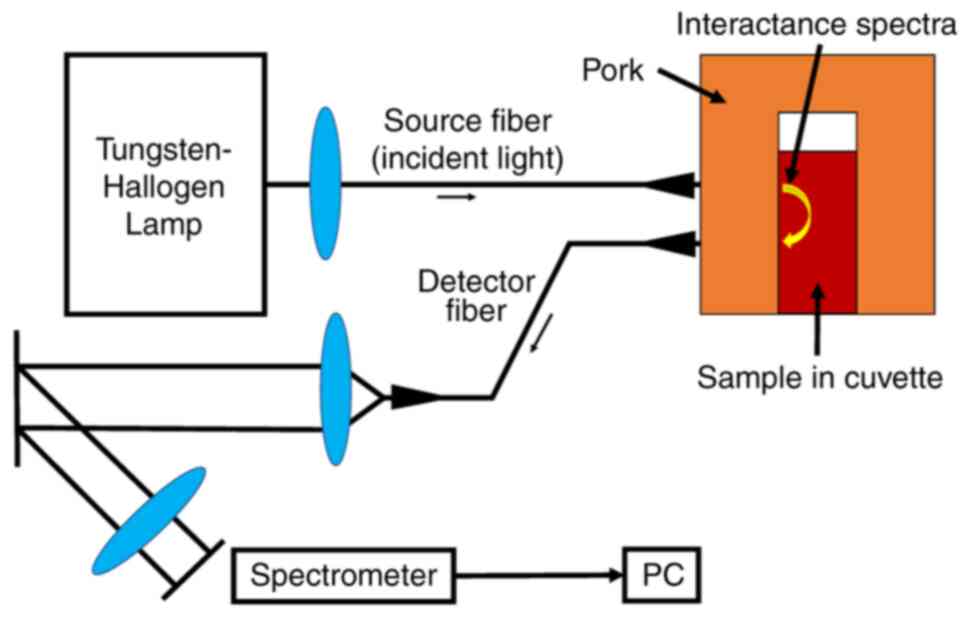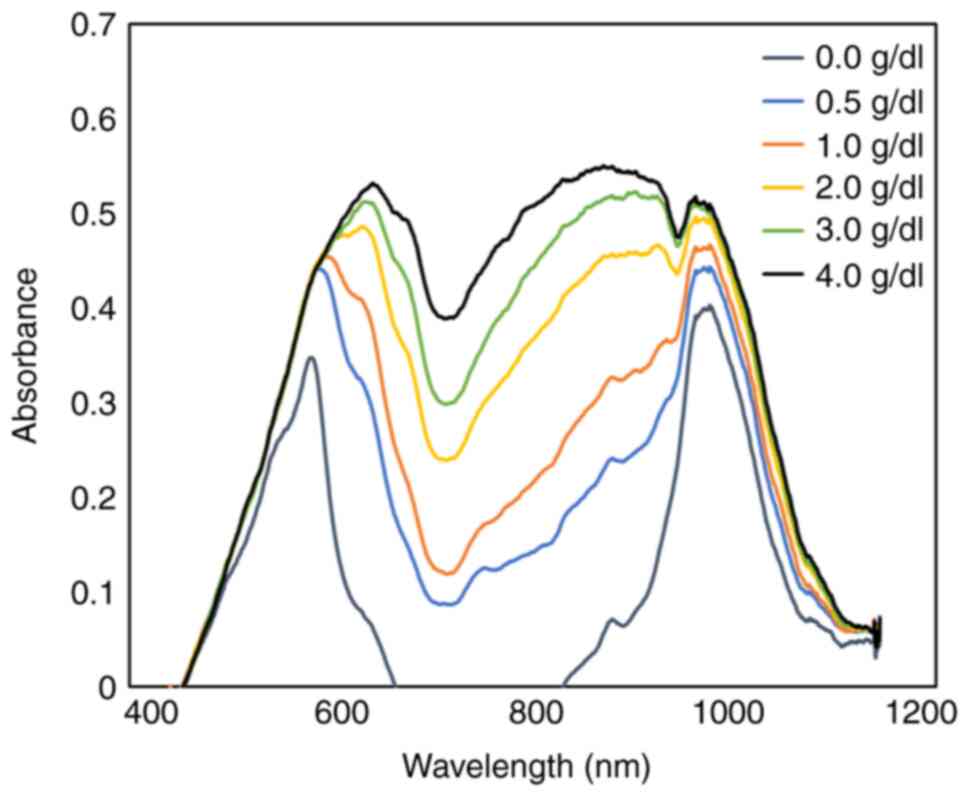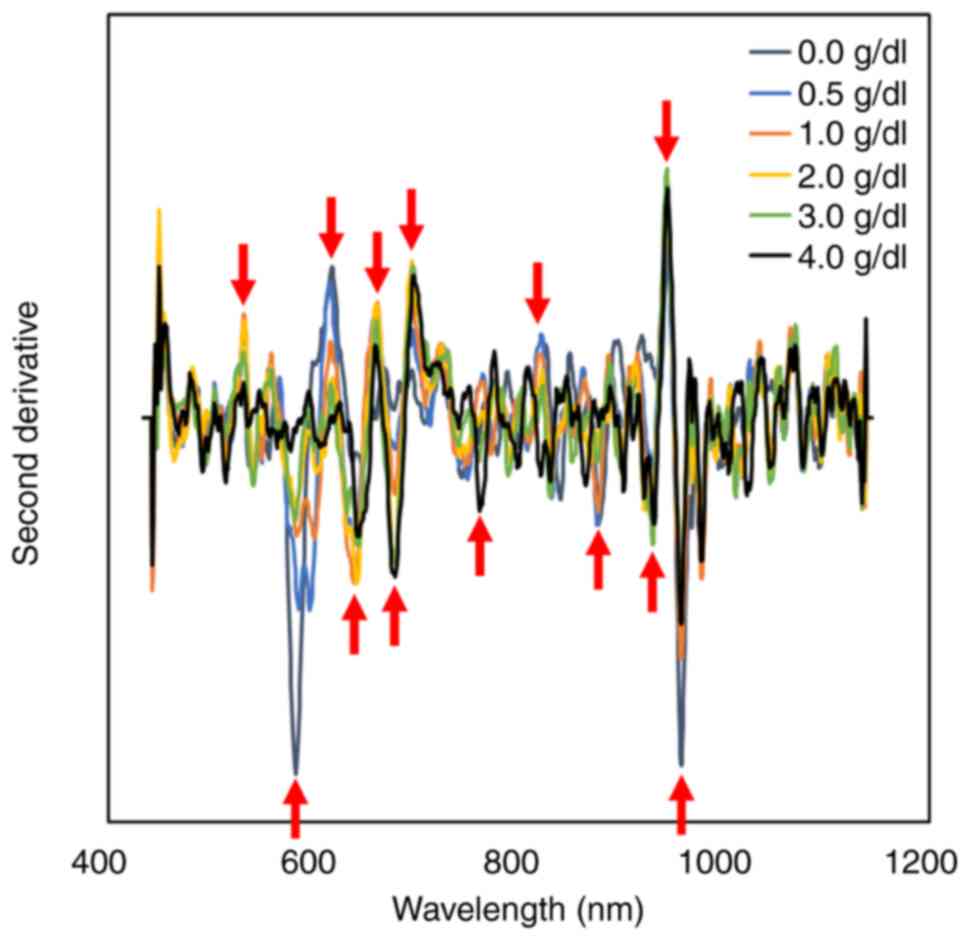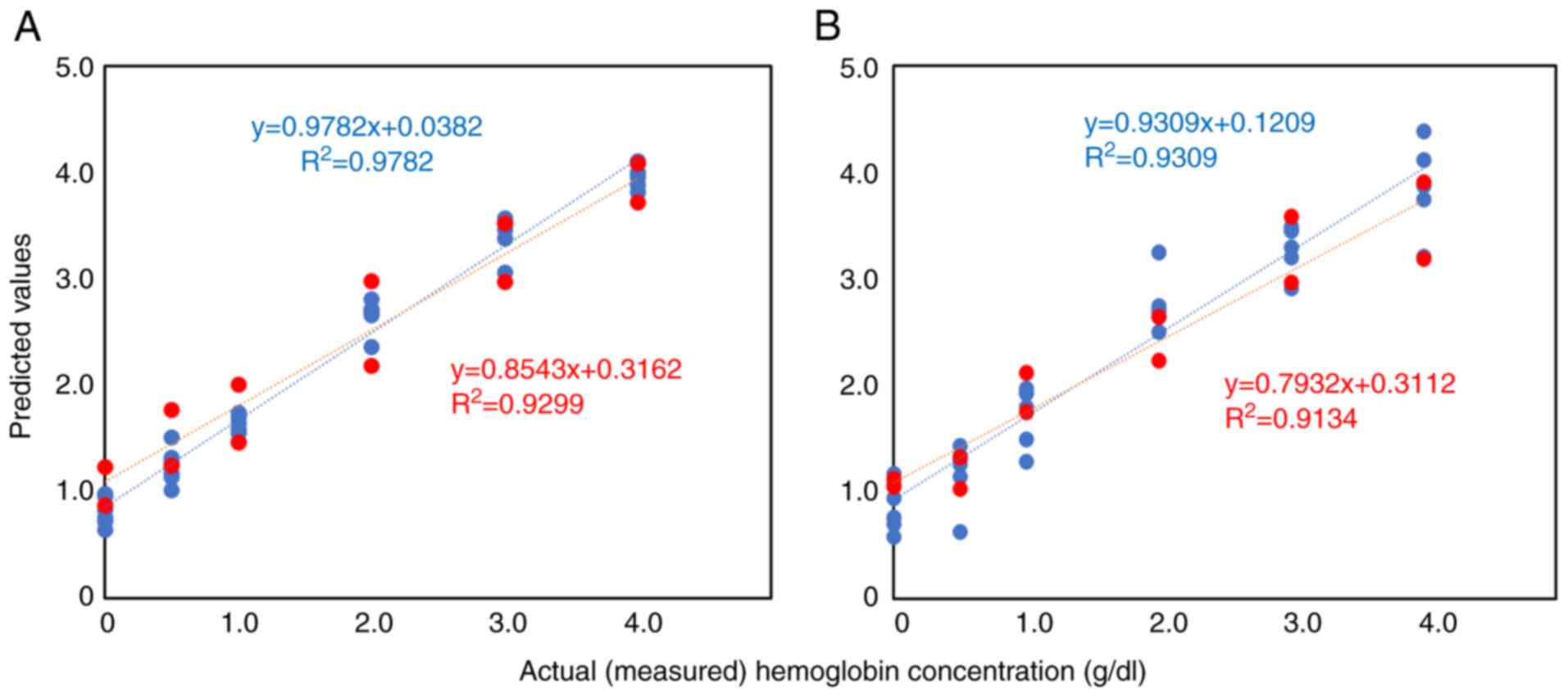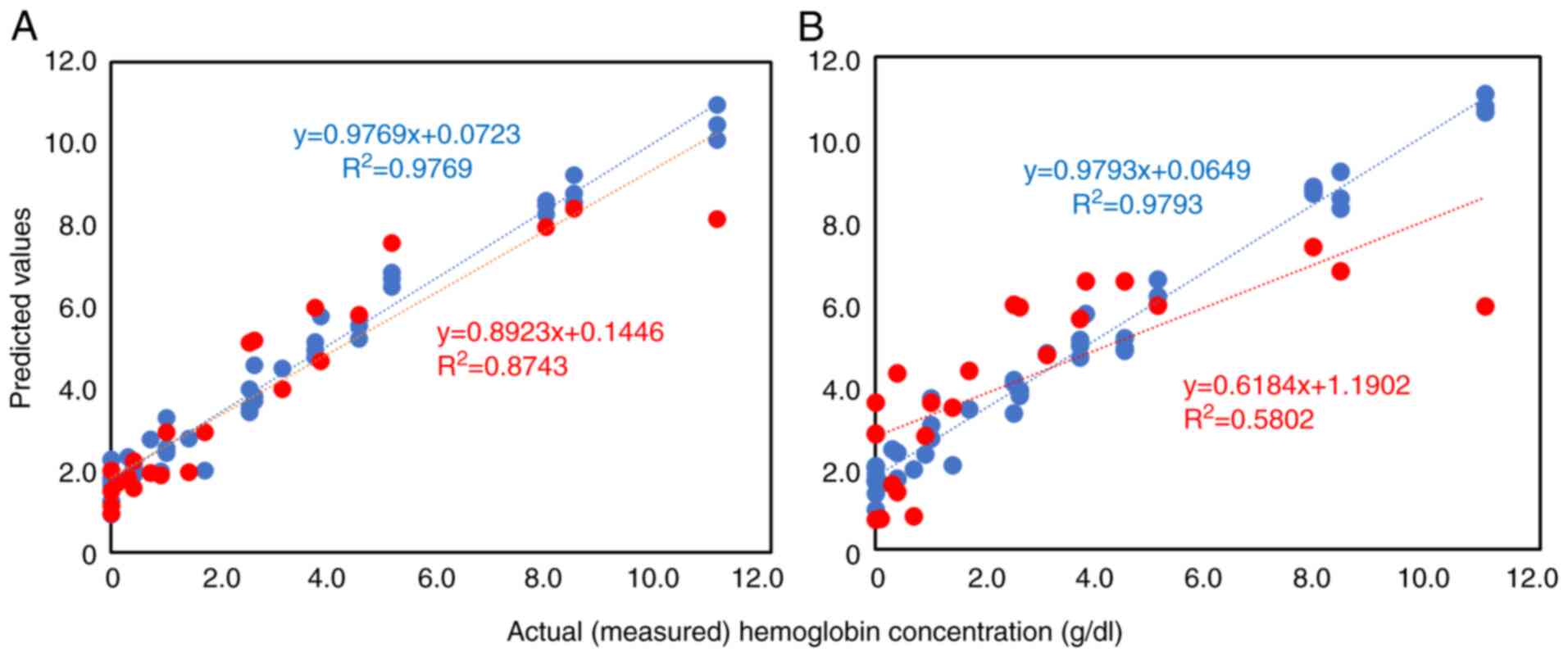|
1
|
Zondervan KT, Becker CM, Koga K, Missmer
SA, Taylor RN and Viganò P: Endometriosis. Nat Rev Dis Primers.
4(9)2018.PubMed/NCBI View Article : Google Scholar
|
|
2
|
Nisenblat V, Bossuyt PM, Shaikh R,
Farquhar C, Jordan V, Scheffers CS, Mol BW, Johnson N and Hull ML:
Blood biomarkers for the non-invasive diagnosis of endometriosis.
Cochrane Database Syst Rev. 2016(CD012179)2016.PubMed/NCBI View Article : Google Scholar
|
|
3
|
Chapron C, Lafay-Pillet MC, Santulli P,
Bourdon M, Maignien C, Gaudet-Chardonnet A, Maitrot-Mantelet L,
Borghese B and Marcellin L: A new validated screening method for
endometriosis diagnosis based on patient questionnaires.
EClinicalMedicine. 44(101263)2022.PubMed/NCBI View Article : Google Scholar
|
|
4
|
Kobayashi H, Yamada Y, Kanayama S,
Furukawa N, Noguchi T, Haruta S, Yoshida S, Sakata M, Sado T and Oi
H: The role of iron in the pathogenesis of endometriosis. Gynecol
Endocrinol. 25:39–52. 2009.PubMed/NCBI View Article : Google Scholar
|
|
5
|
Yamaguchi K, Mandai M, Toyokuni S,
Hamanishi J, Higuchi T, Takakura K and Fujii S: Contents of
endometriotic cysts, especially the high concentration of free
iron, are a possible cause of carcinogenesis in the cysts through
the iron-induced persistent oxidative stress. Clin Cancer Res.
14:32–40. 2008.PubMed/NCBI View Article : Google Scholar
|
|
6
|
Nagayasu M, Imanaka S, Kimura M, Maruyama
S, Kawahara N and Kobayashi H: Effect of the cyst fluid
concentration of iron on infertility in patients with ovarian
endometrioma. World Acad Sci J. 2(25)2020.
|
|
7
|
Imanaka S, Maruyama S, Kimura M, Nagayasu
M, Kawahara N and Kobayashi H: Relationship between cyst fluid
concentrations of iron and severity of dysmenorrhea in patients
with ovarian endometrioma. Gynecol Obstet Invest. 86:185–192.
2021.PubMed/NCBI View Article : Google Scholar
|
|
8
|
Hayashi S, Nakamura T, Motooka Y, Ito F,
Jiang L, Akatsuka S, Iwase A, Kajiyama H, Kikkawa F and Toyokuni S:
Novel ovarian endometriosis model causes infertility via
iron-mediated oxidative stress in mice. Redox Biol.
37(101726)2020.PubMed/NCBI View Article : Google Scholar
|
|
9
|
Yoshimoto C, Iwabuchi T, Shigetomi H and
Kobayashi H: Cyst fluid iron-related compounds as useful markers to
distinguish malignant transformation from benign endometriotic
cysts. Cancer Biomark. 15:493–499. 2015.PubMed/NCBI View Article : Google Scholar
|
|
10
|
Kobayashi H, Yamada Y, Kawahara N, Ogawa K
and Yoshimoto C: Modern approaches to noninvasive diagnosis of
malignant transformation of endometriosis. Oncol Lett.
17:1196–1202. 2019.PubMed/NCBI View Article : Google Scholar
|
|
11
|
Jamshidi B: Ability of near-infrared
spectroscopy for non-destructive detection of internal insect
infestation in fruits: Meta-analysis of spectral ranges and optical
measurement modes. Spectrochim Acta A Mol Biomol Spectrosc.
225(117479)2020.PubMed/NCBI View Article : Google Scholar
|
|
12
|
Kudenov MW, Scarboro CG, Altaqui A,
Boyette M, Yencho GC and Williams CM: Internal defect scanning of
sweetpotatoes using interactance spectroscopy. PLoS One.
16(e0246872)2021.PubMed/NCBI View Article : Google Scholar
|
|
13
|
Hueber DM, Franceschini MA, Ma HY, Zhang
Q, Ballesteros JR, Fantini S, Wallace D, Ntziachristos V and Chance
B: Non-invasive and quantitative near-infrared haemoglobin
spectrometry in the piglet brain during hypoxic stress, using a
frequency-domain multidistance instrument. Phys Med Biol. 46:41–62.
2001.PubMed/NCBI View Article : Google Scholar
|
|
14
|
Wang H, Peng J, Xie C, Bao Y and He Y:
Fruit quality evaluation using spectroscopy technology: A review.
Sensors (Basel). 15:11889–11927. 2015.PubMed/NCBI View Article : Google Scholar
|
|
15
|
Noda HM, Muraoka H and Nasahara KN: Plant
ecophysiological processes in spectral profiles: Perspective from a
deciduous broadleaf forest. J Plant Res. 134:737–751.
2021.PubMed/NCBI View Article : Google Scholar
|
|
16
|
Kawahara N, Yamada Y, Ito F, Hojo W,
Iwabuchi T and Kobayashi H: Discrimination of malignant
transformation from benign endometriosis using a near-infrared
approach. Exp Ther Med. 15:3000–3005. 2018.PubMed/NCBI View Article : Google Scholar
|
|
17
|
Iwabuchi T, Yoshimoto C, Shigetomi H and
Kobayashi H: Cyst fluid hemoglobin species in endometriosis and its
malignant transformation: The role of metallobiology. Oncol Lett.
11:3384–3388. 2016.PubMed/NCBI View Article : Google Scholar
|
|
18
|
Ye X, Doi T, Arakawa O and Zhang S: A
novel spatially resolved interactance spectroscopy system to
estimate degree of red coloration in red-fleshed apple. Sci Rep.
11(21982)2021.PubMed/NCBI View Article : Google Scholar
|
|
19
|
Uludag K, Kohl M, Steinbrink J, Obrig H
and Villringer A: Cross talk in the Lambert-Beer calculation for
near-infrared wavelengths estimated by Monte Carlo simulations. J
Biomed Opt. 7:51–59. 2002.PubMed/NCBI View Article : Google Scholar
|
|
20
|
Chen JY, Zhang H and Matsunaga R: Rapid
determination of the main organic acid composition of raw Japanese
apricot fruit juices using near-infrared spectroscopy. J Agric Food
Chem. 54:9652–9657. 2006.PubMed/NCBI View Article : Google Scholar
|
|
21
|
Kabir A, Rahman MJ, Shamim AA, Klemm RDW,
Labrique AB, Rashid M, Christian P and West KP Jr: Identifying
maternal and infant factors associated with newborn size in rural
Bangladesh by partial least squares (PLS) regression analysis. PLoS
One. 12(e0189677)2017.PubMed/NCBI View Article : Google Scholar
|
|
22
|
Ramadan Z, Hopke PK, Johnson MJ and Scow
KM: Application of PLS and back-propagation neural networks for the
estimation of soil properties. Chemometr Intell Lab Syst. 75:23–30.
2004.
|
|
23
|
Esquerre C, Gowen AA, O'Donnell CP and
Downey G: Initial studies on the quantitation of bruise damage and
freshness in mushrooms using visible-near-infrared spectroscopy. J
Agric Food Chem. 57:1903–1907. 2009.PubMed/NCBI View Article : Google Scholar
|
|
24
|
Akter S, Maejima S, Kawauchi S, Sato S,
Hinoki A, Aosasa S, Yamamoto J and Nishidate I: Evaluation of light
scattering and absorption properties of in vivo rat liver using a
single-reflectance fiber probe during preischemia,
ischemia-reperfusion, and postmortem. J Biomed Opt.
20(076010)2015.PubMed/NCBI View Article : Google Scholar
|
|
25
|
Martínez-Valdivieso D, Font R, Gómez P,
Blanco-Díaz T and Del Río-Celestino M: Determining the mineral
composition in Cucurbita pepo fruit using near infrared reflectance
spectroscopy. J Sci Food Agric. 94:3171–3180. 2014.PubMed/NCBI View Article : Google Scholar
|
|
26
|
Chen JY, Miao Y, Zhang H and Matsunaga R:
Non-destructive determination of carbohydrate content in potatoes
using near infrared spectroscopy. J Near Infrared Spectrosc.
12:311–314. 2004.
|
|
27
|
Nie J, Zhao C, Laganà AS, Liu X and Guo
SW: Identification of lesional attributes of dysmenorrhea severity
and the serum antimüllerian hormone levels in women with ovarian
endometriomas. Fertil Steril. 118:191–202. 2022.PubMed/NCBI View Article : Google Scholar
|
|
28
|
Králíčková M, Vetvicka V, Fiala L, Laganà
AS and Garzon S: The search for biomarkers in endometriosis: A long
and windy road. Reprod Sci. 29:1667–1673. 2022.PubMed/NCBI View Article : Google Scholar
|















